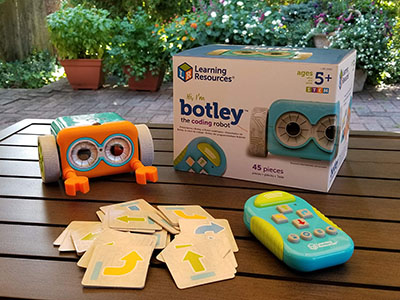
These four stages consist of:
- unplugged computer science
- block-based programming languages
- game development
- introduction to robotics
As STEM education has become more popular, so has the use of robots. They teach young children about engineering, coding, and programming. In addition to STEM literacy, studies reveal that robotics can encourage other skills like hands-on creativity, problem solving, communication, and teamwork.
It has been proven that when robotics are introduced in pre-k to second grade, children are better equipped to master basic robotics and programming skills. Children as young as three years old are learning to program with robot kits. These robotic systems are becoming increasingly popular to teach young children the foundations of computer science in a hands-on way. In addition, robotics for children helps their cognitive, as well as their fine motor and social development.
There are several robotic systems available to inspire your little engineer. These include, but are not limited to, Code-a-Pillar Twist, mBot, Dash, Lego Mindstorms, Botley, and Anki Cozmo.

